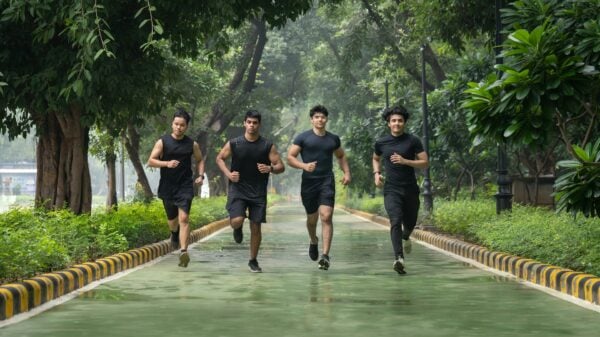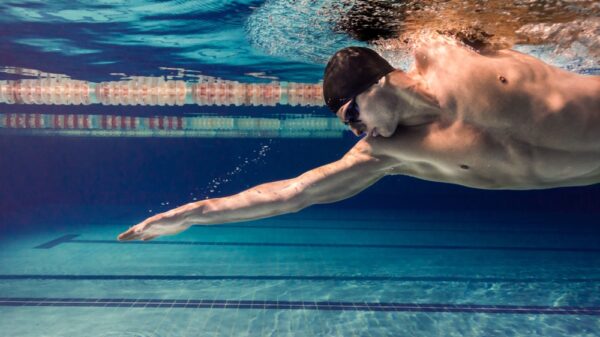exercising safely in the heat. Understanding the conditions can make a huge difference in how your body reacts, so don’t underestimate the impact of humidity versus dry heat.
When the weather starts warming up, it’s easy to get excited about taking your workouts outdoors. The fresh air, the beauty of nature—who wouldn’t want to step outside and break a sweat? But as thrilling as it can be, working out in the heat carries some serious risks, particularly dehydration and overheating, if you don’t take the necessary precautions.
So how can you enjoy that outdoor workout while keeping your body safe and healthy? With a few straightforward strategies, you can relish the fresh air and still get your training in without compromising your well-being.
Stay Hydrated and Rehydrate
Let’s state the obvious: hydration is your best friend during hot weather exercises. When you’re sweating buckets, you’re losing more than just water. Failure to rehydrate properly can lead to severe dehydration, which nobody wants to experience.
Studies show that going into your workout already hydrated is essential. So, make it a point to drink water before, during, and after your workout. Include hydrating foods that replenish your electrolyte levels, such as coconut water, juicy watermelon, and crisp cucumbers. Think of these as your hydration power-ups!
After your sweat session, it’s crucial to replace the fluids and sodium you’ve lost. Consider downing a couple of extra cups of water along with some sodium-rich foods like pickles or a sprinkle of sea salt on your meals.
Plan Wisely
Timing is everything. If you’re venturing outdoors, aim for those cooler parts of the day—early morning or late afternoon/evening works great. You should try to minimize direct sunlight exposure when the sun is blazing.
Consider a Pre-Workout Shower
Have you ever thought about taking a cool shower or a refreshing dip before working out outside? Research indicates this little trick can effectively lower your body temperature, giving you a solid head start when the heat cranks up.
Wear Lightweight Clothing
Dressing for success is key when tackling workouts in the heat. Steer clear of dark colors, which can absorb heat, and instead gravitate towards light, breathable fabrics. Moisture-wicking clothing also works wonders in keeping that sweat at bay, ensuring you feel more comfortable as you move.
Bring an Ice Pack
Feeling overheated mid-workout? An ice pack on the back of your neck can make the world of difference. Alternatively, a cool washcloth can also offer instant relief.
Listen to Your Body
This is a crucial point—pay attention to what your body is telling you. If you start feeling faint, dizzy, or even nauseous, don’t ignore those signals. It’s time to take a break and hydrate.
Excessive sweating can lead to heat exhaustion, which is far from pleasant. Keep a close eye on how much water you’re consuming and how your energy levels are holding up throughout your workout.
Keep It Short
New to working out in the heat? Begin with shorter sessions of about 20-30 minutes. Gradually allow your body to acclimate to the conditions, whether you’re outside or in a hot yoga class.
Allow Acclimatization Time
If the heat is new to you, give yourself a week or two to adjust. Start with lighter, shorter workouts during those cooler hours. This careful approach helps your body get better at regulating its temperature, improving how efficiently you sweat, and boosting your overall cardiovascular fitness.
Adjust Your Workout Intensity
It’s essential to dial down the intensity of your workouts in the heat. When temperatures soar, modify your routine to suit the climate. Whether that means shortening your workout or extending rest periods, listen to your body so you can stay active and safe.
Use Sun Protection
Don’t forget about sun safety! Be diligent about applying a broad-spectrum sunscreen with a minimum SPF of 30 before heading outdoors. Also, consider light-colored and moisture-wicking clothing, along with a breathable hat and UV-blocking sunglasses to protect yourself from harmful sun rays while you enjoy your outdoor sweat sessions.
Know Your Limits and Take Breaks
Here’s another critical reminder: know when to take a step back. If you start feeling dizzy, weak, or confused, or if you cease sweating, stop exercising immediately. Your body will appreciate regular breaks, especially when the heat is relentless.
Eat Cooling Foods
Fuel your body wisely by choosing hydrating and cooling foods like watermelon, cucumbers, and oranges before and after your workout. Light meals that are high in water content can prepare you for exercise, while nutrient-rich snacks or smoothies post-workout can replenish lost fluids and electrolytes.
Understand Humidity vs. Dry Heat
Lastly, be mindful of the difference between humidity and dry heat. High humidity can significantly hinder your body’s ability to cool itself through sweat, making you feel hotter and more fatigued. Conversely, dry heat can trick you into underestimating how much fluid you’re losing. Always check the temperature and humidity before heading out to give yourself the best chance for a safe and effective workout.
By applying these strategies, you can safely enjoy your workouts in the heat and experience the physical and mental benefits of exercising outdoors. Listen to your body, hydrate well, and enjoy the beauty that outdoor workout sessions can bring.Exercising in the heat can feel like a double-edged sword: on one side, it offers unique benefits; on the other, it can pose serious risks if not approached with care. Understanding the challenges and rewards of hot weather workouts allows for a more enjoyable and effective fitness experience—whether you’re training for competition or just looking to keep fit.
Recognizing the Warning Signs
First things first: stay informed about the signs of heat-related illnesses. It’s easy to overlook the early indicators of heat exhaustion, such as heavy sweating, cold or clammy skin, muscle cramps, fatigue, headaches, and dizziness. Let’s be real; when you’re pushing yourself, it’s hard to admit you might need a break. But ignoring these signs can lead to a more severe condition known as heat stroke, characterized by confusion, a rapid pulse, and body temperatures soaring above 103°F. If you or someone around you experiences these symptoms, don’t hesitate—call for help immediately.
Image Source: Unsplash
































